Humankind has always been associated with other entities: animals, objects, elements, conventions, beliefs, concepts, ideas. From the twentieth century onwards, even with systems, processes and machines that have expanded the relational network on which collective existence is based, renegotiating the anthropocentric perspective with which the human being tends to approach the world. Post modernity has generated a complex hybrid ecosystem in which hypertechnology, nature, artifice, reality and virtuality intersect in provisional equilibrium between heterogeneous and apparently antagonistic forces. Irreversible boundless processes between previously considered domains have changed the substance of things, the density of matter, the capillarity of space, and the condensation of time into a new, all-encompassing fluency that refuses to respond to the traditional epistemological categories by opening the minds to unexplored universes of meanings.
This is the point of departure of Emilio Vavarella’s production, a researcher at Harvard University in Film and Visual Studies and Critical Media Practise: combining artistic interdisciplinarity and theoretical research, his work analyzes the logic behind the operation of machines and software by investigating their malfunctions to extrapolate unpredictable poetic and creative effects. This approach, based on the act of collecting pre-existing material and then reorganizing it through plausible but paradoxical procedures, emphasizes the creative self-sufficiency of human-activated processes that, by increasing, acquire an unimpressive self-existent existence. The RE-CAPTURE exhibition: Room(s) for Imperfection proposes three different cases of estranged relationship between living beings and scientific applications, showing the effects and possible developments of technological ubiquity where we are immersed with the intent of detecting the problems and potential of a contemporaneity in a constant state of alteration.
The exhibition path starts from the Animal Cinema movie-work, a sequence of videos extracted from you tube and rehearsed by the artist, showing the behavior of various animals captured by camcorders found in their natural environment because they were temporarily abandoned by some tourists or specially placed for research purposes. In these close-up shootings we see how nonhuman protagonists, strictly quoted as actors in the final credits, interact with GoPro stranger devices by spontaneously incorporating them in their actions without letting us fully understand their degree of awareness in using and their real intentions. Sometimes the encounter creates intimate framing at the limit of voyeurism, such as when the sniffing or swallowing organs of a lioness or a grizzly approach so much to the objective to saturate the spectator’s field of view with a blind glimpse of hair, epidermis, mucous membranes, tongues and saliva. In other cases, the animal is both operator and subject of the shooting, like an octopus with its tentacles which strangle the object to carry it with him in a fascinating underwater walk, an eagle that raises it in a high altitude flight to place it in its nest and fix it with curiosity or a colorful crab that circles it to hide it in the den perhaps to eat or kill it in solitude. The editing creates a single stream of moving images produced by non-human beings that operate technologies that are created by man for man, which over time have become so ubiquitous to function properly even if they are randomly used by unaware operators. This transition reflects the artist’s conviction that being human always means to be also partially non-human, starting with the thousands of microorganisms and parasites that regulate our metabolism. Likewise, technology is increasingly symbiotic with the human body both as a macro or micro internal or external prosthesis, or as a device that enhances his faculties of movement, memory, resistance, communication. Vavarella’s work analyzes how these components intersect in a single system / network and seeks to identify the crucial points of the various interdependence relationships that are established between ontologically different entities by focusing on affinities and conflicts.
It also responds to the intention to give credit to what is unintentional (animal or mechanical technology) The Other Shape of Things, a collection of objects, in this case skulls, made by a 3D printer from a digital model obtained from the scanning of matrix objects with different types of imperfection discarded by the production circuit. In this way the artist verifies the intrinsic creativity of a serial process capable of generating new alterations and he adopts a protocol similar to that of the machine, establishing precise procedural rules to be strictly followed without evading them to induce predetermined changes. The new “digital abortions” thus obtained are materialized in golden plastic as if they were luxurious model-souvenirs while the regular implementation of the initial errors at each step leads the final configuration to show very similar indeterminate forms, although they result from different errors.
The narrative and theoretical substrate of the installation Do you like cyber? which ends the show is instead the scandal broke out in 2015 for the hacking of the American dating site Ashley Madison, following which users’ chat was posted online. The sharing made it possible to find out how many conversations were conducted by bots and not by human beings. From some inconsistencies in the data came also 69 striking cases where these basic artificial intelligence had transgressed the programming software instructions to contact women or other bots on their own initiative without any computational logic. Vavarella by using three parametric speakers mounted on robotic arms in motion creates a disturbing sound limbo where high-frequency artificial voices infinitely repeat the 69 anarchist messages. The immateriality of these sterile conversations, accentuated by the property of speakers to create focused sound streams that differently resonate in the environment depending on whether they are refracted or absorbed by the physical obstacles they encounter by generating virtual sound sources at every point of impact, is balanced by a solid body of metallic bowels and electric wires that do not seem to suffer any inferiority complex with the human body. The total indifference of the work to the spectator suggests a radical change of perspective with respect to the most common post-human projections in which the dream of being human joins cyborg and robot nostalgically devoid of their own ontological autonomy and let us imagine new possible aesthetic scenarios that exclude our understanding and perception. According to the artist, therefore, the future of evolution does not lie in the rule or virtuosity of its application, but in the critical acceptance of the unexpected that can no longer be defined as a mistake because it responds to the operating logic of other entities with which it would be anachronistic to refuse to live together.
Info:
Emilio Vavarella. RE-CAPTURE: Room(s) for Imperfection
curated by Federica Patti
2017 November 18 – 2018 January 20
GALLLERIAPIÙ
Via del Porto 48 a/b Bologna
 Emilio Vavarella, Animal Cinema, video in HD, formato 16:9, 12’12”, 2017, courtesy GALLLERIAPIÙ
Emilio Vavarella, Animal Cinema, video in HD, formato 16:9, 12’12”, 2017, courtesy GALLLERIAPIÙ
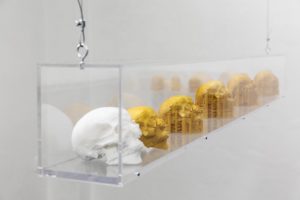 Emilio Vavarella, L’altra forma delle cose (The Other Shape of Things), gruppo scultoreo in plastica PLA e ABS, realizzato con scanner 3D e stampanti 3D, 2017 courtesy GALLLERIAPIÙ
Emilio Vavarella, L’altra forma delle cose (The Other Shape of Things), gruppo scultoreo in plastica PLA e ABS, realizzato con scanner 3D e stampanti 3D, 2017 courtesy GALLLERIAPIÙ
 Emilio Vavarella, L’altra forma delle cose (The Other Shape of Things), 2017, exhibition view at GALLLERIAPIÙ
Emilio Vavarella, L’altra forma delle cose (The Other Shape of Things), 2017, exhibition view at GALLLERIAPIÙ
 Emilio Vavarella, L’altra forma delle cose (The Other Shape of Things), 2017, exhibition view at GALLLERIAPIÙ
Emilio Vavarella, L’altra forma delle cose (The Other Shape of Things), 2017, exhibition view at GALLLERIAPIÙ
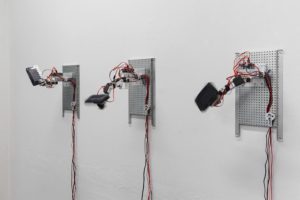 Emilio Vavarella, Do You Like Cyber? installazione sonora site-specific con tre altoparlanti parametrici robotizzati, 2017 courtesy GALLLERIAPIÙ
Emilio Vavarella, Do You Like Cyber? installazione sonora site-specific con tre altoparlanti parametrici robotizzati, 2017 courtesy GALLLERIAPIÙ
Graduated in art history at DAMS in Bologna, city where she continued to live and work, she specialized in Siena with Enrico Crispolti. Curious and attentive to the becoming of the contemporary, she believes in the power of art to make life more interesting and she loves to explore its latest trends through dialogue with artists, curators and gallery owners. She considers writing a form of reasoning and analysis that reconstructs the connection between the artist’s creative path and the surrounding context.



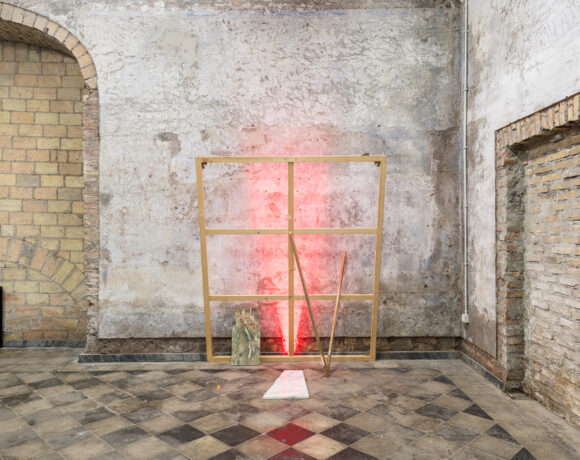
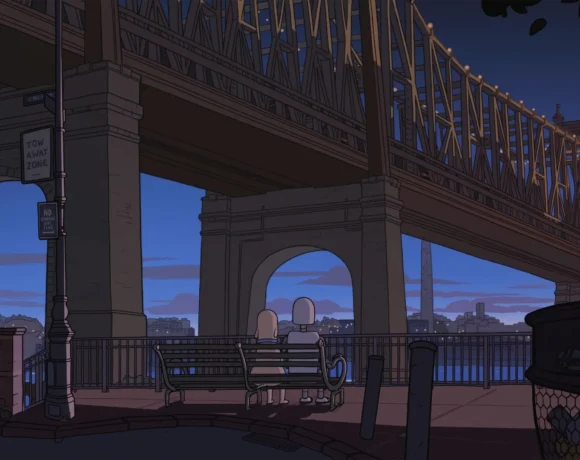
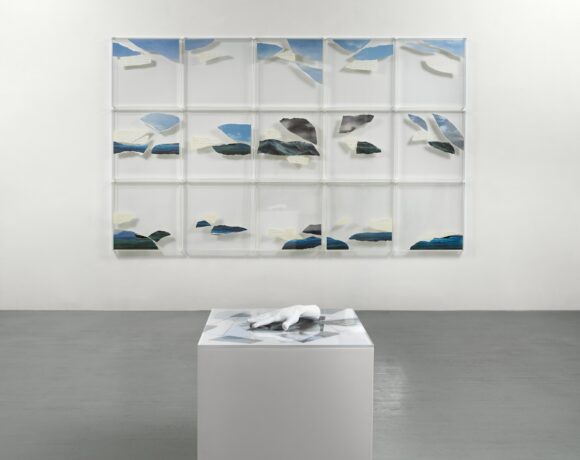

NO COMMENT